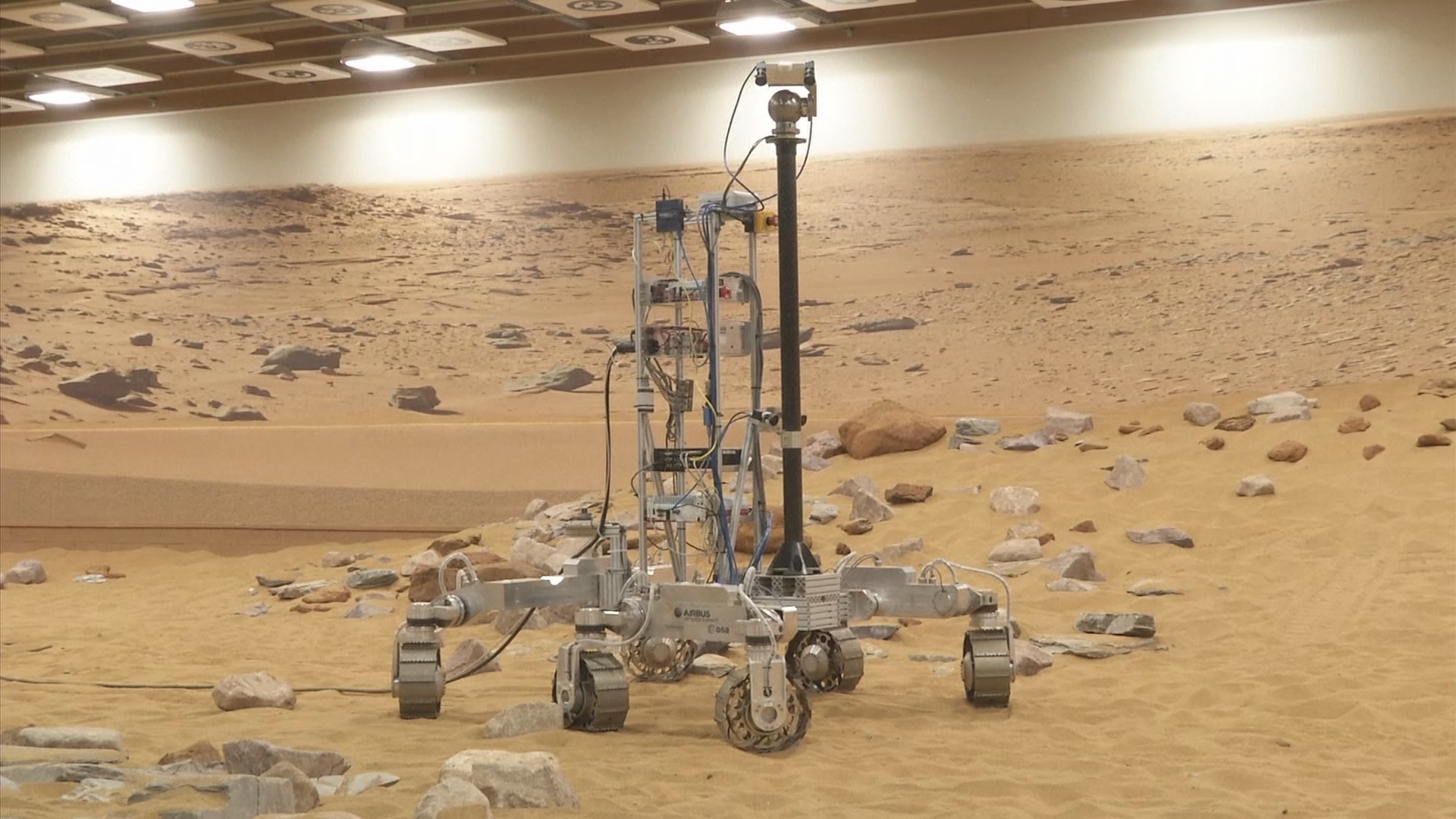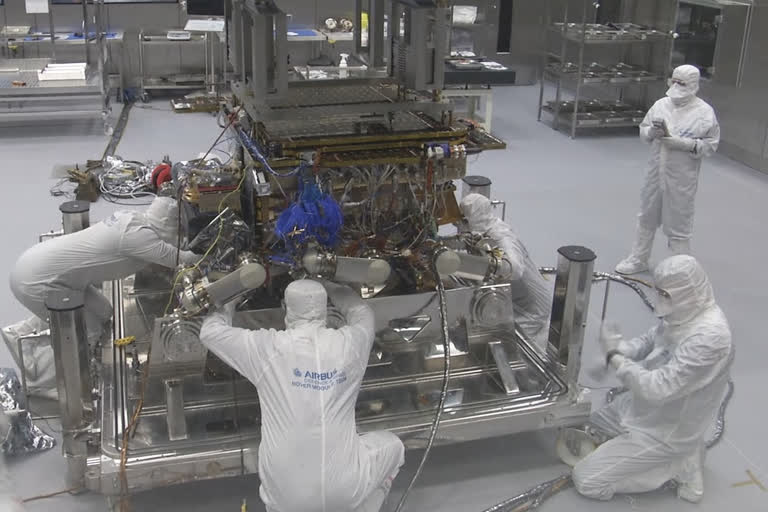Stevenage: In an Airbus clean room, engineers gave the finishing touches to 'Rosalind Franklin', the European Space Agency's 2020 ExoMars rover. The aerospace company has completed assembly of the rover, a vital stage in its path to the Red Planet, at its facility in Stevenage.
ExoMars is a joint mission between the European Space Agency (ESA) and Russia's Roscosmos that plans to land on the Red Planet in March 2021 after a nine-month trip.
Named 'Rosalind Franklin' after the late British DNA pioneer, the six-wheeled rover is equipped with a drill that can burrow up to two metres into the Martian surface.
It will sample soil, analyse its composition and search for evidence of past or present life hidden below.
ExoMars manager, Pietro Baglioni said, "We have been doing tests to prove the functionality of all the mechanisms and the instruments onboard and all tests are successful so far. So, we feel that finally, we have a machine built ready to operate on Mars."
The Martian atmosphere gives organic material a little protection from the Sun's radiation, so scientists believe that they can find evidence of past or present life below the surface.
The rover is built to look for signs of present and past life on Mars. Also to characterize the environment, to perform a lot of science, but the main focus is really to get signs of present and past life on Mars.
Scientists have perfected the rover's design, including its autonomous navigation system.
This will help it to travel between sites of interest much more quickly than by being driven remotely from Earth.

Lead systems engineer on the ExoMars project, Paul Meacham said, "The rover needs to be able to essentially figure out where is safe and where is not. There's no self-writing capability on this rover. If it was to attempt a rock that was beyond its capabilities, it would flip over and that would be the end of mission."
The whole point of the autonomous navigation is to keep us safe and to allow us to get across the surfaces as efficiently as possible.
If everything goes according to plan, Rosalind Franklin will be Europe's first rover on Mars, after several successful NASA landings.
ESA's last attempt failed after its Schiaparelli lander crashed into the Martian surface in October 2016.
Getting to Mars and landing something on the surface is fraught with difficulty. Martian atmosphere is very much more dynamic than ours.
Meacham said, "Every time you go down into the Martian surface, it's slightly different from the last time you did it. So, it is a real challenge to get a payload down to the surface safely."
But there are more challenges ahead, two unsuccessful parachute tests earlier this year revealed problems of "a similar nature" and another unsuccessful parachute test in the US this November could force ESA to miss its proposed July 2020 launch date, potentially delaying the mission for two years.
The UK has played a leading role in the ExoMars mission. The UK Space Agency said that it's the second-largest European contributor, which invested 287 million euros in the mission and 14 million British pounds on instruments.
"It's a demonstration of the UK's ongoing commitment to the European Space Agency, even post-Brexit," said chief executive Graham Turnock.
"I think this is a demonstration that we continue to be important players in European space, but also we're looking towards collaborations in the rest of the world," he added.
Read also: Watch: Wildfire burns homes in Salt Lake City suburb



